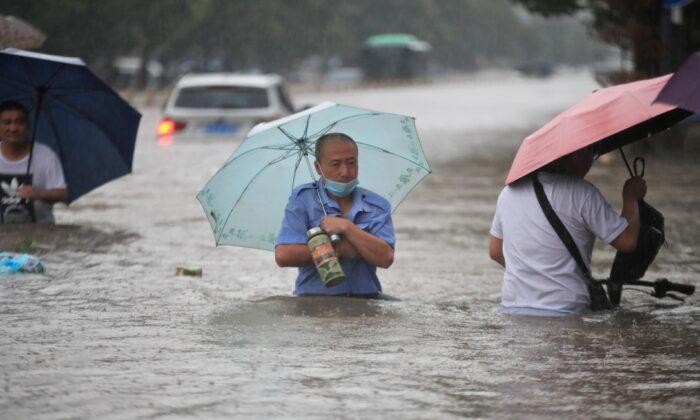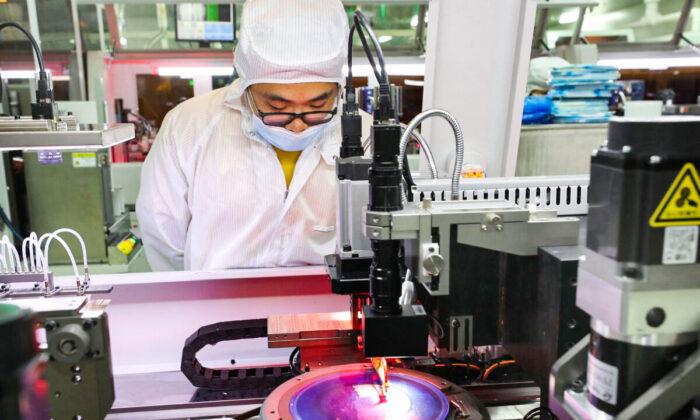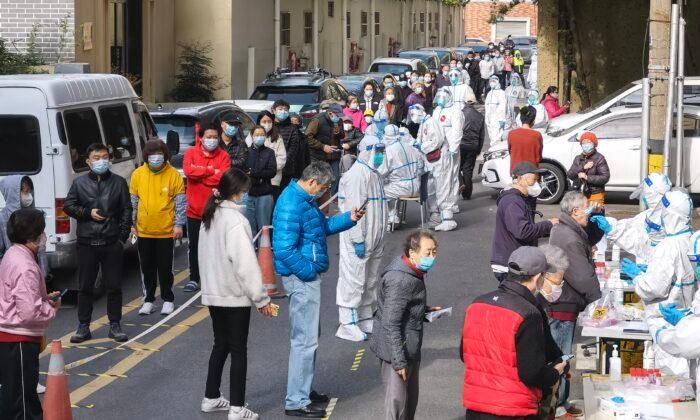On July 20 local time, record-breaking rainfall ravaged Zhengzhou, Henan, and other places in China, causing severe floods. Authorities claimed that the scale of the floods was “
once in 5,000 years.” In addition to the direct casualties caused by the floods, most urban areas in Zhengzhou, the worst-hit city thus far, have experienced power outages. Critically ill patients in the hospitals were at risk as they can only rely on manual respirators.
The floods
paralyzed Zhengzhou’s traffic. Schools and hospitals became “islands” as stagnant water rose. Residents became trapped and unable to travel. The flooding of the power supply system cut off many parts of the city, including The First Affiliated Hospital of Zhengzhou University, often referred to as “the largest hospital in the world,” with the highest number of surgeries in China.
At 9 p.m. on July 20, a Weibo user posted a request for help, saying that her father was still in the intensive care unit of The First Affiliated Hospital of Zhengzhou University, hooked up to tracheal intubation and ventilator. She could not rush to the hospital due to the heavy downpour, and the exit of her residential building was flooded. She was distressed about her critically ill father.
Our reporter noticed that the Weibo post mentioned above was deleted, but another user saved its screenshot and has since shared it.
One employee of Zhengzhou University’s First Affiliated Hospital
told the Health Times, a Chinese newspaper, that the entire hospital was out of power in the early morning of July 21. Elevators were out of service, and the backup power supply was unavailable. Nearly 3,000 medical staff were sticking to their posts, calming the patients. For patients who need oxygen, the medical staff resorted to artificial oxygen supply airbags. About 600 critically ill patients needed to be transferred to other hospitals.
At 6 a.m. on July 21, a Zhengzhou resident, who wished to remain anonymous, told The Epoch Times that she did not go to work on July 20 and that her colleague was trapped in an office more than 20 stories high. Her home was also experiencing a power outage. She contacted Epoch Times reporters via the internet when she went to a nearby store to charge her phone.
According to
Hong Kong media reports, all subways and buses in Zhengzhou were suspended right after the subway was flooded on the afternoon of July 20, Zhengzhou resident Ms. Ding, revealed. About 95 percent of the city had power outages. Fortunately, the office where she worked had not, but there was a power and water outage at her home and she couldn’t take transportation home.
A Replay of the Zhengzhou Deadly Rainfall
Since July 17, Zhengzhou, Jiaozuo, Xinxiang, and many places in Henan Province have experienced heavy downpours. Zhengzhou was the center with the most severe flooding, and July 19 to 20 was the heaviest period. From 8 p.m. on July 17 to 8 p.m. on July 20, the three-day precipitation in Zhengzhou was a record 617.1 mm (24.3 inches). During this period, the hourly and single-day precipitation exceeded the 60-year record since Zhengzhou was established in 1951.
According to
Henan’s Department of Water Resources, from 8 a.m. on July 18 to 2 a.m. on July 21, the accumulated precipitation at Zhengzhou West Railway Station was 854 mm (33.6 inches), Jiangang was 818 mm (32.2 inches), and Sigou 756 mm (29.7 inches).
The department also stated that the rainfall in Henan was “once in 5,000 years.” It announced that from 2:30 a.m. on July 21, the level 2 emergency response for flood and drought disaster prevention would be upgraded to level 1. Regarding the CCP’s claim of “once in 5,000 years,” it is unknown where they obtained the data, given that China’s precipitation records only go back to 1951, according to state news agency Xinhua.
The Wulongkou parking lot and surrounding areas of Zhengzhou Metro Line 5 experienced severe waterlogging and water accumulation.
At 6 p.m. on July 20, stagnant water smashed open the retaining wall, causing subway Line 5 trains to stop operating at the Beach Temple Street Station and Shakou Road Station tunnels. The floodwater poured into the underground tunnels and the Line 5 trains, and passengers were trapped in the carriages, retching and gasping for air.
According to Zhengzhou authorities, on July 21, more than 500 passengers were evacuated from the inundated subway line, with 12 killed and five others injured. By July 22, the Chinese regime announced that 33 people had died from the flooding, with eight missing.
Meanwhile, Chinese netizens have taken to social media demanding the regime reveal the true death toll.
Tuesday Road Company, a Hong Kong-based independent media channel, reported that “Zhengzhou Officials Immensely Concealed the Death Toll.” The video suggests that the actual death toll in Henan is incomparable to the numbers released by the authorities, pointing out a packed funeral parlor, and the chief of the local meteorological bureau being washed away.
According to
The Paper, a Chinese digital newspaper, on the morning of July 20, Zhao Jianbiao, chief of the local meteorological bureau, went to the office of the local government, but when he returned, he encountered extremely heavy rainfall and was washed away. Fortunately, local residents rescued him in the afternoon.
Many believe that the upstream reservoir’s flood release has aggravated the floodwater levels in Zhengzhou. According to a
CCTV report, at 10:57 a.m. on July 20, the water level of the Changzhuang Reservoir in Zhengzhou exceeded the warning line by 38 cm (15 inches). The flood discharge started according to the instructions of the provincial and municipal flood control headquarters. The discharge flow was three cubic meters (105 cubic feet) per second.
Except for the Changzhuang Reservoir, other reservoirs also discharged water around 8 a.m. on July 21 due to high water alarms, but their specific opening times are unknown. According to
a report by Time-Weekly, at 8:29 on July 21, the Henan’s Department of Water Resources staff said that 47 reservoirs in Henan reached full capacity and were discharging floods, including eight large-scale reservoirs and 39 medium-sized reservoirs.





